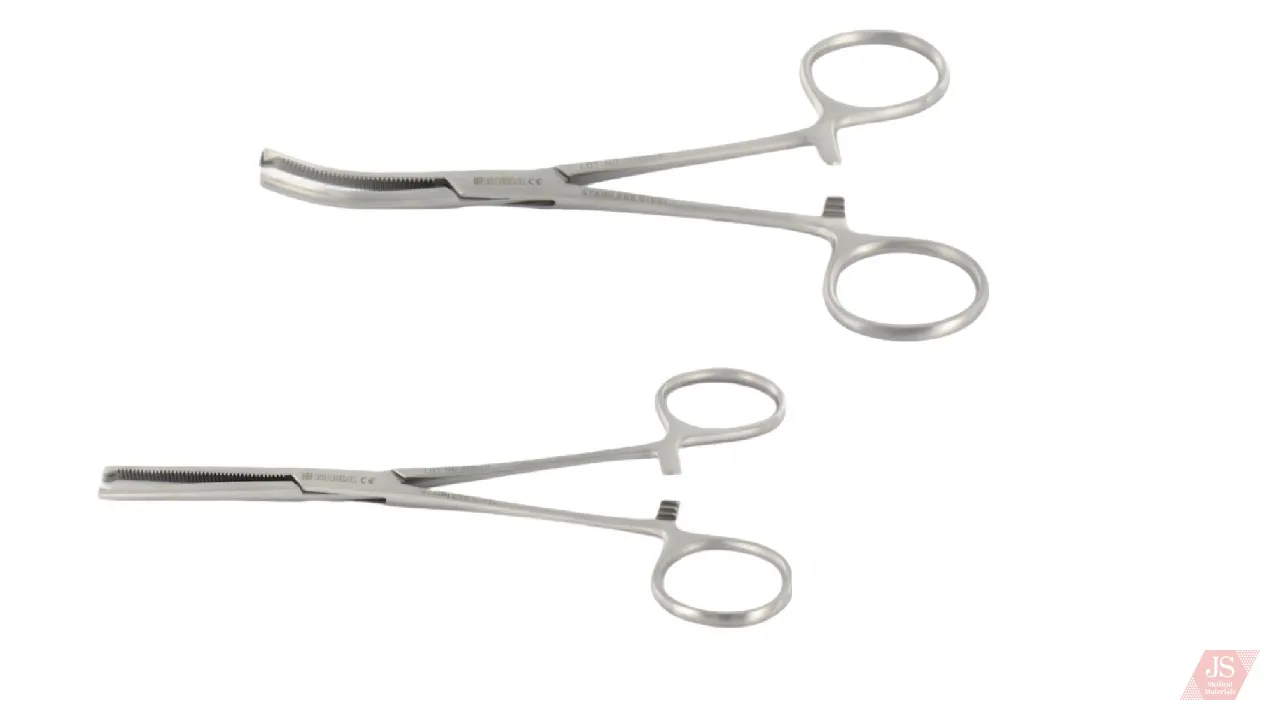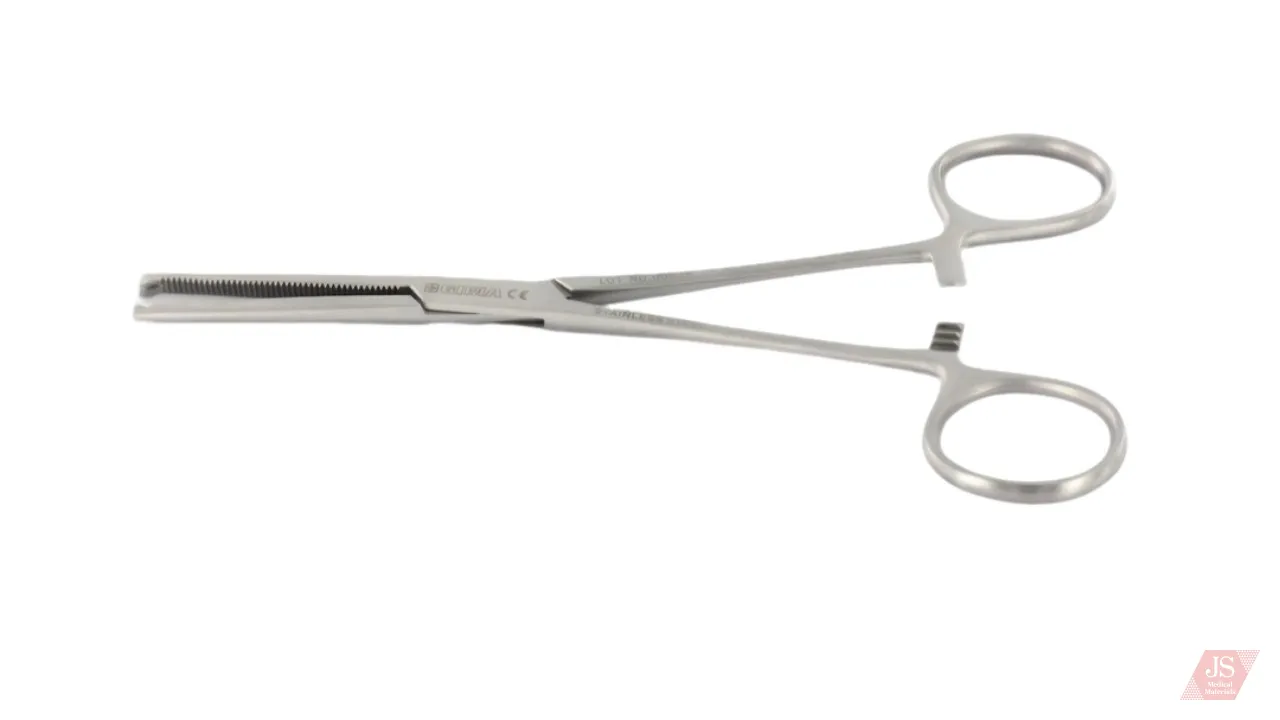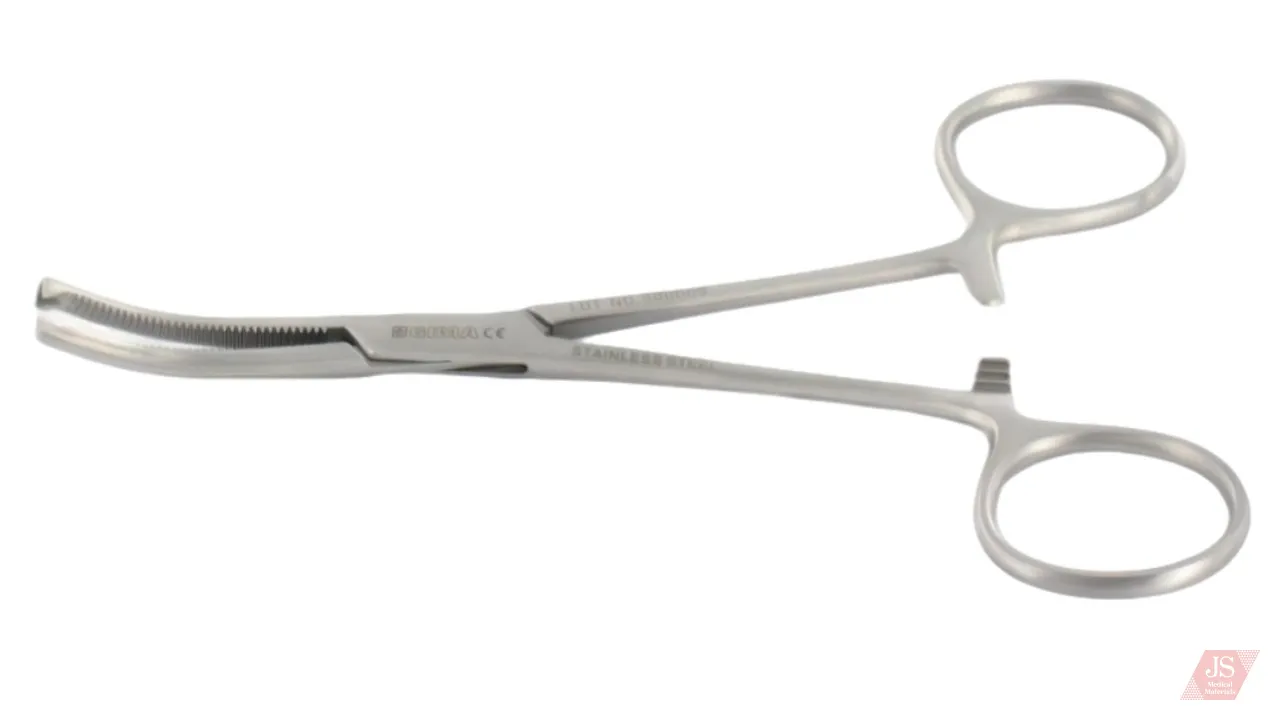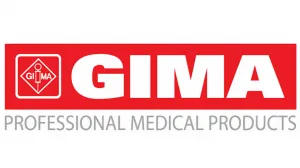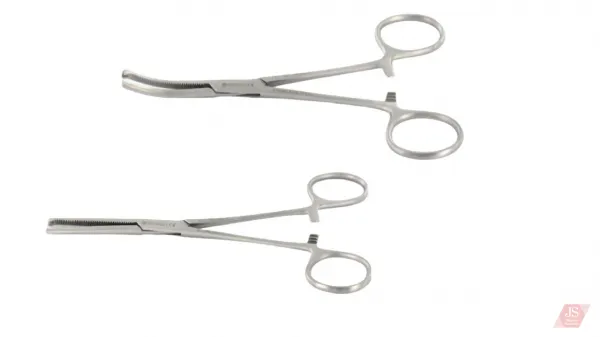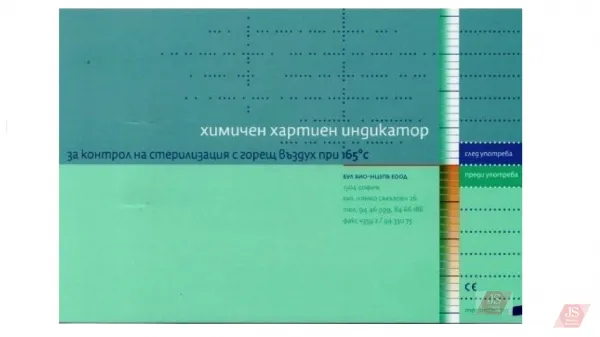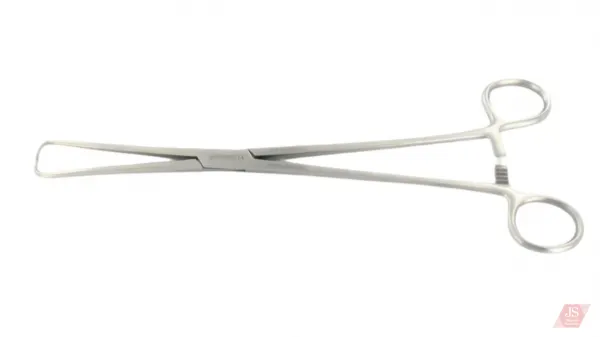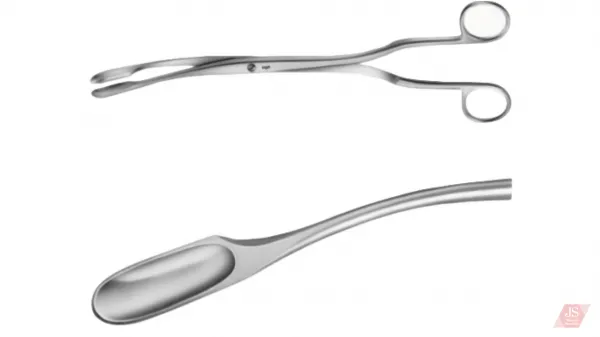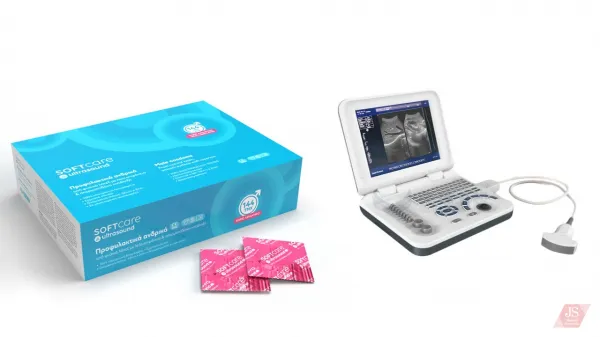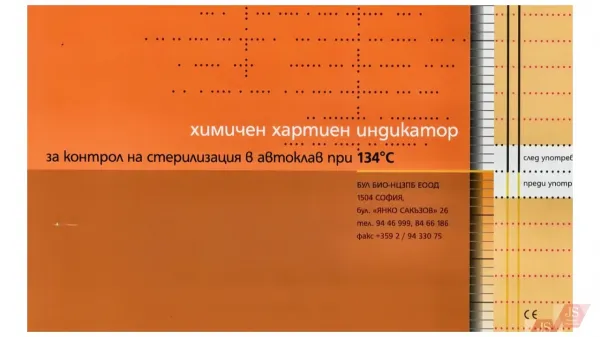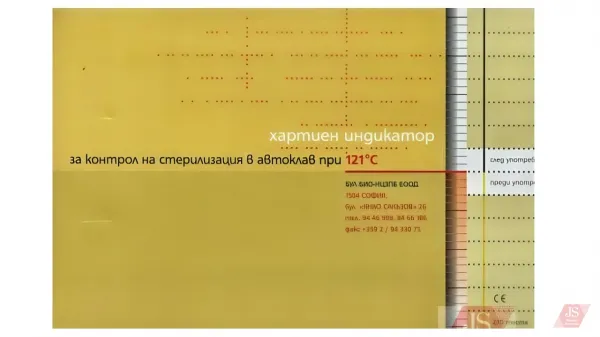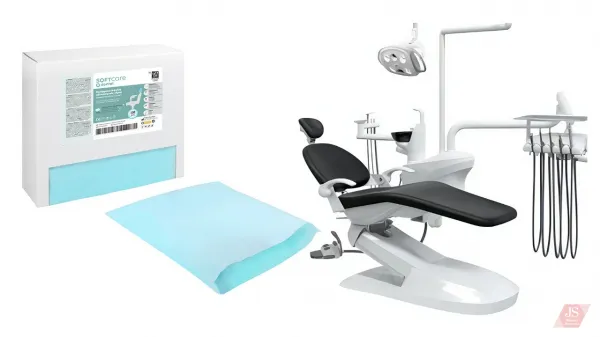Kocher hemostatic forceps
Kosher's hemostatic forceps are an important tool in the field of surgery.
Kosher hemostatic hemostatic clips are used to capture and temporarily close blood vessels during operations, helping to stop bleeding and prevent blood loss.
Kocher straight and curved hemostatic clips are used in various types of operations and procedures where control of bleeding is required.
They can be used in general surgery, orthopedics, gynecology, urology and other medical specialties.
Main features:
Sharp tips: Kocher's hemostatic forceps have sharp tips that allow precise and secure grasping of blood vessels.
Embossed surface: Hemostatic clips have embossed surfaces on their tips, which provides a better grip and prevents blood vessels from slipping.
Locking mechanism: Kocher hemostatic forceps have a locking mechanism that allows the surgeon to lock them in place while manipulation is being performed.
Different sizes: These hemostatic clips are available in different lengths and sizes to adapt to the specific needs of the procedure and vessel size.
In medical practice, there are both straight and curved Kocher hemostatic clips, and each of them has its specific purpose and application:
Kocher's straight hemostatic forceps are used for manipulations where greater precision and control is required. They are generally longer and thinner than curved hemostatic clips and are preferred when working with small or hard-to-reach blood vessels, such as in orthopedics or neurosurgery.
Curved Kocher hemostatic clips have curved tips that allow better access to vessels in some surgical procedures. They are particularly useful when working with larger blood vessels or when angulation of the vessels is to be performed. Curved hemostatic forceps can provide a better grip, which is important when dealing with heavy bleeding.
The choice between straight and curved hemostatic clips depends on the nature of the operation and the specific requirements of the surgeon. Sometimes both types of clips are used within the same procedure, depending on the situation.
It is important to note that both straight and curved hemostatic clips must be sterilized and maintained in accordance with medical standards to prevent the risk of patient infections and ensure the safety of the operation.


 Български
Български


